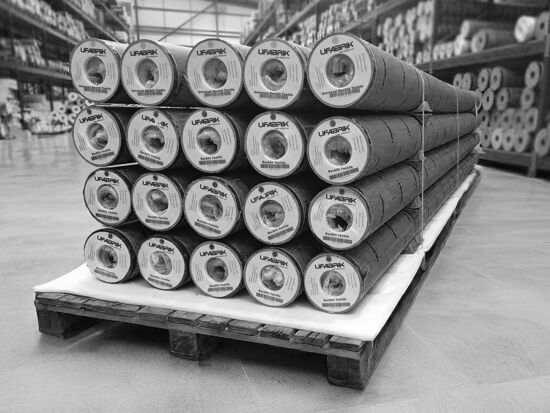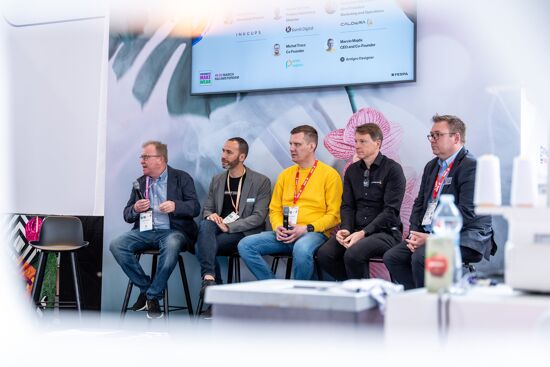Personalisation is a long-tail experience: how Variable Data Printing can drive years of engagement
.png?width=750)
Pat McGrew shares how Personalisation in print offers long-term engagement, not just one-off interactions. Using minimal data, tailored campaigns across formats like mail and signage can boost loyalty. GDPR compliance is key, requiring transparency and consent. Success stories demonstrate personalisation's power, making it a vital competitive edge.
In today’s competitive landscape, standing out requires more than just high-quality production and eye-catching designs. It demands relevance, engagement, and a deep understanding of what customers value. And not all customers value the same things! That’s where personalisation and customisation come into play. But for many European printers and brands, personalisation can feel intimidating. Is it too complex to design and implement? Is it too costly to set up the infrastructure? How hard is it to comply with GDPR regulations? Will my customers pay for it?
The practical reality is that personalisation isn’t difficult, and it doesn’t have to violate GDPR guidelines. With just a few carefully selected data points and a dash of creativity, you can respectfully launch personalised campaigns that evolve over time, creating a long-tail engagement experience that keeps customers connected for years. Whether you’re in direct mail, newspapers, packaging, or signage, personalisation can open doors to new revenue streams and cement your value as a print service provider to your clients.
And there are real-world examples of successful personalisation campaigns!
Why Personalisation is a Long-Tail Opportunity
In the world of print, personalisation is not a one-off event—it’s a journey. A personalised campaign can start with a single touchpoint and blossom into a series of ongoing, relevant communications that evolve over time. And those touch points can be in the post box, as part of product packaging, and embodied in signage. Personalisation isn’t always a name; sometimes it is conceptual!
This is where the idea of “long-tail engagement” is useful. Instead of one static message (no matter how it is transmitted) and hoping for the best, brands can stay connected with their customers using a series of tailored interactions that build loyalty and drive repeat business.
Here’s how it works:
- Stage 1: Initial Engagement
The journey begins with a targeted communication—whether it’s a personalised direct mail piece, a custom newspaper insert, or a QR code-triggered signage experience. The goal is to grab attention and invite the recipient on to a journey. - Stage 2: Follow-Up & Reinforcement
Once you have their attention, follow-up communications build on the original message. This could include follow-up offers, seasonal promotions, or content that’s relevant to past behavior. Again, it can be targeted to a person or a demographic profile! Each touchpoint refines the profile, making future interactions even more relevant. - Stage 3: Loyalty & Expansion
Over time, personalised interactions deepen the relationship, turning occasional customers into loyal advocates. Personalised offers, anniversary promotions, and exclusive content ensure that the brand remains top-of-mind.
This approach creates a cycle of ongoing engagement where each interaction informs the next, making the experience feel natural and relevant to the recipient.
It’s Easier Than You Think
One of the biggest myths surrounding personalisation is that it requires complex data sets and highly sophisticated infrastructure. The reality is that creating a customised or personalised campaign can be surprisingly simple. With just a few pieces of data, you can create a campaign that feels tailored and relevant to each recipient.
So, start small and focus on what matters. Many successful campaigns rely on just 2-3 key variables. Yes, you can use a name if you have permission. But then look for other data points. Greet your customers and prospects referencing the recipient’s city or neighborhood can make a piece feel tailored and relevant. If you have access to the data, don’t look at what a specific person buys, but what people who have similar profiles buy. Even basic segmentation based on expressed interests can make a communication feel highly customised.
By focusing on just a few variables, you can create tailored content across multiple formats—from direct mail to signage—without the complexity that many assume personalisation requires.
GDPR Compliance: It’s All About Transparency and Consent
For many, the specter of GDPR compliance looms large. However, adhering to GDPR guidelines doesn’t mean giving up on personalisation and customisation altogether.
Start with the basics. If you are going to go beyond using freely available demographic data, make sure customers understand how their data will be used and obtain their consent before launching personalised campaigns. Only collect the data you need to execute your campaign. There’s no need to overcomplicate things—just a few key variables can go a long way. Give recipients the option to opt-out of personalised communications at any time. Protect customer information by pseudonymizing or encrypting data wherever possible.
When data collection and usage are handled transparently and ethically, personalisation becomes a win-win for everyone.
In the opening session of the SmartHub Conference at The Personalisation Experience we will be showing some of the many success stories for this type of campaign. There is the story of a Belgian company that has been leveraging the same approach to data and targeted communication for more than a decade. Another story focuses on how an association uses personalisation. Still another looks at signage and labels.
Personalisation is no longer a “nice-to-have”—it’s a competitive differentiator that can drive years of engagement and loyalty. By starting small, leveraging just a few data variables, and staying compliant with GDPR, European PSPs and brands can unlock the power of long-tail personalisation across multiple channels.
If you’re attending FESPA, see the real-world examples and actionable strategies to help you harness the power of personalisation in your own business. Bring your questions—we’ll have plenty of ideas to inspire your next campaign!
Pat McGrew, a print industry expert with over 30 years' experience, is a consultant, author, and speaker. She advises OEMs and print companies, focusing on strategy, workflow, and technology. She's also a champion for best practices and women in print, with numerous industry awards and certifications.
SmartHub Conference is a dedicated information programme within the show floor bringing smart, intelligent production to the forefront with an array of insightful content sessions. Register here to visit the conference and Personalisation Experience from 6 - 9 May at Messe Berlin in Germany.
Topics
Interested in joining our community?
Enquire today about joining your local FESPA Association or FESPA Direct
Recent news

Why more print service providers are turning to consignment stock management
Robin East, Group Chief Commercial Officer at UFABRIK discusses how consignment stock management is gaining popularity in the print industry, offering improved cash flow and operational efficiency. It ensures on-site stock availability, enhancing customer service and reducing delivery times. This approach also promotes sustainability through consolidated shipments and fosters stronger supplier-customer relationships.

How is AI quietly shaping the print industry
Johnny Shells, Principal Analyst at Keypoint Intelligence shares how AI is quietly transforming the print industry, enhancing efficiency and personalisation. It automates tasks like prepress checks, job scheduling, and colour management. AI also enables personalised printing, reduces waste through demand forecasting, and improves customer service with chatbots. This technology optimises workflows, not replaces human expertise.

